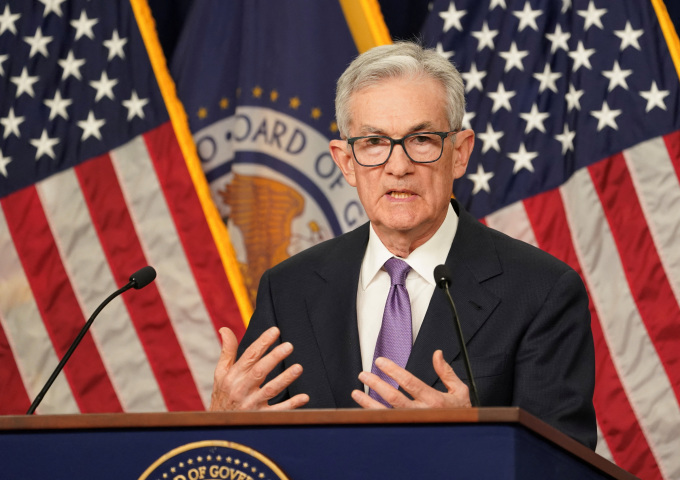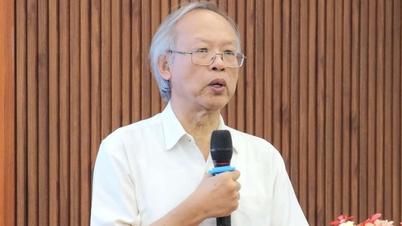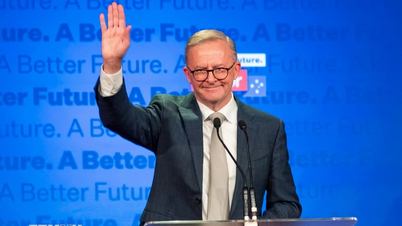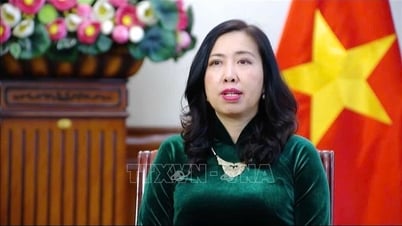The US Federal Reserve (Fed) recently edited many words in its statements and reports, so that the market is not surprised when interest rates decrease.
The Fed holds a two-day policy meeting this week. Fed officials have signaled that they will not cut interest rates anytime soon. Most economists believe the Fed will wait until June, given strong household spending and an uncertain economic outlook.
However, they have given many signals about shifting monetary policy. For the past six months, the Fed has kept the reference interest rate at 5.25-5.5%.
Price pressures are slowing. The Fed’s preferred inflation gauge, the personal consumption expenditures (PCE) price index, rose 2.6% in December 2023 from a year earlier, according to the Commerce Department. Core inflation is also now below the 2% inflation target.
Following the data, investors are now expecting the policy meeting in late April to kick off a series of rate cuts this year. Fed officials have so far insisted that progress against inflation is insufficient. But they also do not want to cut rates suddenly.
"I think the Fed is like a big ship that's changing course. Their speeches have gone from extremely tight, to talking about the possibility of a change, to gradually preparing for a rate cut. It takes time and they're on the right track," said Luke Tilley, chief economist at Wilmington Trust Investment Advisors.
Reuters says that below are 5 changes that the Fed has made so far, in preparation for the change in monetary policy direction.
From "pain" to "golden opportunity"

Fed Chairman Jerome Powell at a press conference on December 13. Photo: Reuters
Initially, Fed officials were almost certain that their fight against inflation would increase unemployment and cause “pain” for households, Fed Chairman Jerome Powell warned in August 2022.
But by mid-2023, unemployment would still be below 4%. Inflation was cooling sharply. At that point, Chicago Fed President Austan Goolsbee began talking about the possibility of finding a “golden opportunity” to stem the economic pain.
Earlier this month, Atlanta Fed President Raphael Bostic echoed the phrase, saying the current situation made him think about cutting rates sooner than expected.
Fed Chairman Jerome Powell acknowledged in September that he saw a path for a “soft landing” (inflation slowing without triggering a recession or significant unemployment) widening. Fed Board of Governors member Christopher Waller recently said the combination of low inflation and low unemployment was “as good as it gets.”
The Fed doesn't want to make mistakes.
“Not getting inflation under control would be our biggest mistake,” Powell said in November 2023.
But as inflation has fallen more than expected without raising rates for the past six months, Powell has adjusted his language. “We recognize the risks of staying tight for too long. We don’t want to make that mistake,” he said in a speech last month.
Economists at Citi, Bank of America and others believe the Fed will signal more flexibility at this week's meeting, dropping the "further tightening" phrasing that has been mentioned at every meeting since March 2023.
Tight-fisted officials also think about cutting interest rates
In 2023, Fed officials have only mentioned raising rates, or left the door open for a rate hike. But earlier this year, Fed Board of Governors member Michelle Bowman, one of the most hawkish, said her views had changed. Bowman said rates may not need to rise any further and may even fall if inflation continues to decline.
Another prominent hawk, Cleveland Fed President Loretta Mester, said the March meeting was too early to cut rates. But she also stressed that several rate cuts would be expected this year.
Dallas Fed President Lorie Logan said this month that easing financial conditions does not mean no interest rate hikes. However, she sees “significant progress” toward a more sustainable and rebalancing economy.
Balancing the risks
Since the start of rate hikes in March 2022, policymakers have largely focused on the “price stability” objective. But by the end of the year, the second objective — maximizing employment — had also begun to gain traction.
“We’re back to the goal of balancing between doing too much and doing too little,” Powell said last month. San Francisco Fed President Mary Daly said last week that the risks to the economy from both are now “equal.”
Proceed with caution
At their last meeting, Fed officials mentioned the possibility of cutting rates in 2024, but did not discuss when or how quickly. Analysts expect the discussion to continue at this week's meeting.
Over the past few months, Fed officials have changed their language when it comes to potential rate cuts. Waller said they would be “cautious and not rushed.”
Analysts say the only thing that is clear is that the Fed will not cut rates as dramatically as it did when it tightened. "We are entering the phase of the rate cut discussion. That will be a major topic on the Fed's agenda this week. However, officials will still be concerned about the issue of unsustainable inflation," said Gregory Daco, chief economist at EY.
Ha Thu (according to Reuters)
Source link


![[Photo] General Secretary To Lam receives Sri Lankan President Anura Kumara Dissanayaka](https://vphoto.vietnam.vn/thumb/1200x675/vietnam/resource/IMAGE/2025/5/4/75feee4ea0c14825819a8b7ad25518d8)


![[Photo] Vietnam shines at Paris International Fair 2025 with cultural and culinary colors](https://vphoto.vietnam.vn/thumb/1200x675/vietnam/resource/IMAGE/2025/5/4/74b16c2a197a42eb97597414009d4eb8)






























































































![[Video]. Building OCOP products based on local strengths](https://vphoto.vietnam.vn/thumb/402x226/vietnam/resource/IMAGE/2025/5/3/61677e8b3a364110b271e7b15ed91b3f)




Comment (0)